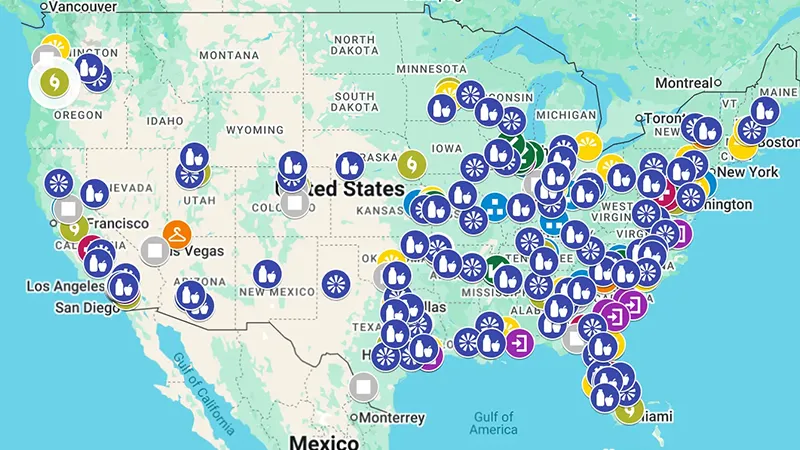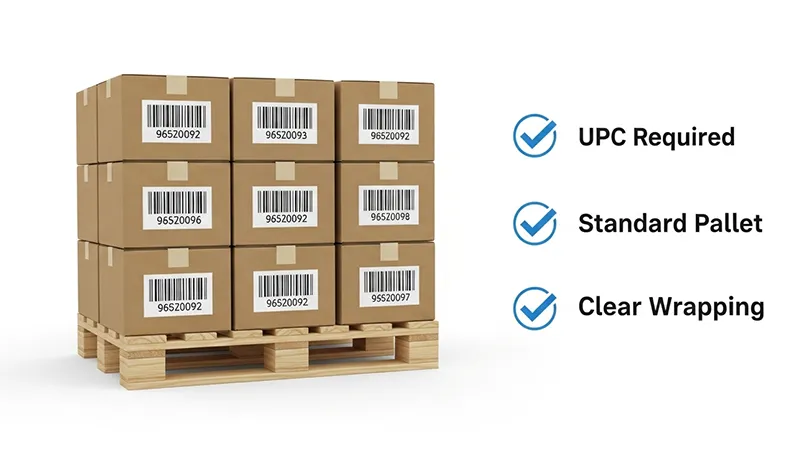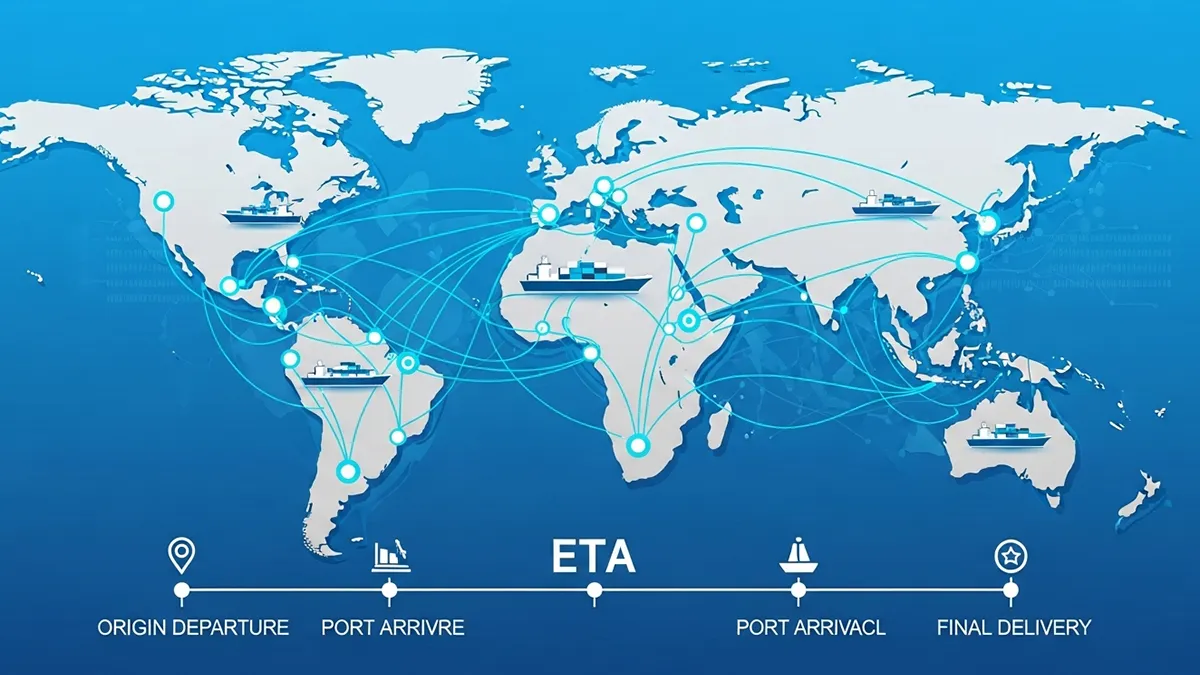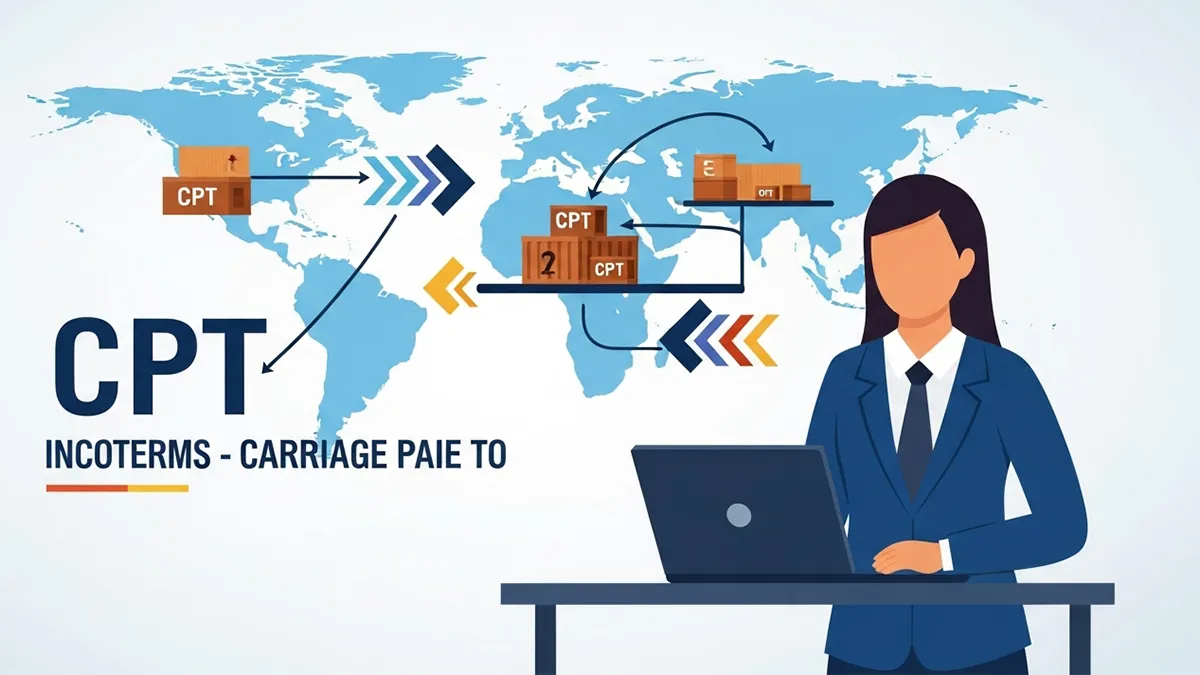The Ultimate Walmart Fulfillment Centers & Distribution Network Guide (2025)
If you searched for “Walmart fulfillment centers,” “WFS distribution network,” or “Walmart warehouse locations,” this guide provides the full 2025 breakdown.
Walmart’s fulfillment ecosystem includes automated fulfillment centers, traditional distribution warehouses, specialized regional hubs, and a unique 4,700-store ship-from-store network—forming over 10,000 active shipping nodes with 2-day coverage to 95% of the U.S. population. This hybrid structure is now a major advantage for sellers shipping inventory from China.
What Are Walmart Fulfillment Centers? (2025 Definition)

Walmart Fulfillment Centers (FCs) are large-scale e-commerce warehouses where Walmart Fulfillment Services (WFS) processes inventory, picks/pack orders, and ships products directly to consumers. Unlike Walmart’s traditional distribution centers (DCs), FCs are designed for marketplace sellers and direct-to-consumer shipments.
Walmart’s 2025 network consists of:
-
Automated next-gen fulfillment centers
-
Traditional distribution centers now handling e-commerce
-
Store-based fulfillment hubs (4,700+ locations)
-
Specialty hubs for fresh, frozen, or bulky items
-
Cross-border networks in Canada, Mexico, and the UK
Compared to Amazon’s inbound structure (explained in our Amazon FBA shipping guide), Walmart uses a more distributed model built around retail stores—resulting in faster delivery without needing hundreds of FCs.
How the Walmart Fulfillment Network Works (FCs, DCs, Stores & Specialty Hubs)
To understand Walmart inbound and routing logic, sellers must first understand the four major facility types:
1. Fulfillment Centers (WFS FCs)
-
Automated order-picking systems
-
Robotics and high-density storage
-
For marketplace sellers using WFS
-
Fastest outbound speed
2. Traditional Distribution Centers (DCs)
-
Replenish Walmart retail stores
-
Now handle 40%+ of online orders
-
Often closer to regional markets
-
High throughput, low dwell time
3. Store-Based Fulfillment (4,700+ stores)
This is Walmart’s biggest advantage over Amazon.
-
Every store doubles as a mini-fulfillment center
-
Same-day / next-day coverage
-
Reduces last-mile shipping distance dramatically
4. Specialty & Import Hubs
-
Fresh/frozen DCs
-
Port-adjacent hubs
-
Cross-dock facilities
-
Oversize/bulky item hubs
This hybrid network creates more inbound flexibility for sellers shipping from China.
Walmart Fulfillment Centers by U.S. Region (2025 Overview)
Rather than listing hundreds of addresses that quickly become outdated, this guide groups Walmart’s network by region + role + strategic value—far more meaningful for cross-border sellers.
West Coast Region (California, Nevada, Arizona)
Why it matters:
Fastest routing for China–US shipments via Los Angeles/Long Beach and Oakland.
Key FC/Hub Examples:
-
Colton, CA – West Coast import & high-volume hub
-
Las Vegas, NV – Serves NV/UT/AZ with 24/7 operations
Best for:
Home goods, electronics, general merchandise, seasonal volume.
Midwest Region (Illinois, Indiana, Ohio)
Why it matters:
Centralized coverage for entire Midwest and Great Lakes markets.
Key FC/Hub Examples:
-
Joliet, IL – Major next-gen automated facility
-
Plainfield, IN – Cross-region connector
Best for:
Apparel, sporting goods, midweight items.
South & Southwest Region (Texas, Oklahoma, Alabama)
Why it matters:
Fast access to Texas, one of the largest e-commerce states in the U.S.
Key FC/Hub Examples:
-
Lancaster, TX – 1.5M sq ft mega-facility
-
Mobile, AL – Import processing hub
Best for:
Furniture, bulky products, oversize SKUs.
East Coast & Northeast Region (New Jersey, Pennsylvania, Georgia)
Why it matters:
Densest population corridor → fastest last-mile coverage.
Key FC/Hub Examples:
-
Pedricktown, NJ – Complete Northeast coverage
-
Bethlehem, PA – High-volume distribution
Best for:
Fast movers requiring 1–2 day delivery to NYC/Philly/Boston.
Southeast Region (Florida & Carolinas)
Why it matters:
Tourism-driven demand + hurricane-resistant FC designs.
Key FC/Hub Examples:
-
Orlando, FL – High seasonal flow
-
Ridgeville, SC – Newest automated facility
Walmart International Distribution Networks (Canada, Mexico, UK, Asia)
Walmart’s cross-border integration is often stronger than Amazon’s in 2025.
Walmart Canada Network
-
All facilities handle both retail + e-commerce
-
Direct cross-border returns to the U.S.
-
Ontario and Alberta serve as major hubs
Walmart Mexico (CEDIS Network)
Why it matters for sellers:
Inventory can route into Texas, Arizona, and California markets with extremely low transit time.
Key roles:
-
Import hubs (Estado de México)
-
Northern DCs (Monterrey, Mexicali) for direct U.S. access
-
Western DCs (Guadalajara) for Pacific markets
UK, Japan, India, China
Important mainly for global marketplace sellers.
Japan and India networks (Seiyu / Flipkart integration) give Walmart a strong Asia-Pacific footprint.
Walmart Fulfillment Services (WFS) Explained
What Is WFS?
Walmart’s version of FBA:
-
Ship inventory to Walmart FCs
-
Walmart handles pick/pack/ship
-
2-day nationwide coverage
WFS Benefits (Compared to Amazon FBA)
-
Uses UPC/GTIN (no FNSKU required)
-
Simpler packaging standards
-
Lower fulfillment costs in many categories
-
Accepts items with 180+ days of expiration (vs Amazon’s 90+)
-
Natural exposure inside Walmart’s massive store ecosystem
WFS Limitations
-
Hazmat restrictions
-
No liquids/aerosols in certain FCs
-
Category-based acceptance logic
WFS Inbound Requirements (2025 Compliance Checklist)

Most sellers misunderstand WFS inbound, leading to chargebacks and delays.
Below is the simplified 2025 requirement list.
Carton Requirements
-
Standard carton size preferred
-
Avoid overweight cartons (>50 lb)
-
Ensure readability of UPC/GTIN from two sides
Palletization Rules
-
40x48 inches CHEP standard
-
No European or custom pallets
-
Max pallet height 72–78 inches
-
Stretch wrap must be clear and secure
Labeling
-
UPC/GTIN only
-
No FNSKU or Amazon prep labels
-
Master carton marking required for multi-pack products
Documentation (Mandatory)
-
ASN
-
BOL
-
Packing list
-
WFS inbound PO
If you’re familiar with Amazon requirements (see our Amazon appointment guide), WFS is generally simpler—but still error-prone for new sellers.
Walmart FC Appointment Scheduling (LTL/FTL Delivery Rules)
Appointment Types
-
Live unload (most common)
-
Drop trailer (high-volume vendors)
-
Carrier-scheduled slots
What Determines the Appointment Window
-
FC workload
-
Seasonality
-
Carrier availability
-
ASN accuracy
Frequent Inbound Failures
-
Late trucks
-
Incorrect pallet size
-
Missing UPC
-
ASN mismatch
-
Overweight pallets
Avoiding these issues dramatically increases receiving speed.
How Walmart Processes Inbound Shipments (Step-by-Step)
1. Carrier Check-In
Driver arrives at the FC guard shack.
2. Dock Assignment
Walmart assigns a dock; delays occur during peak seasons.
3. Unloading & Initial Inspection
Cartons checked for damage, labeling, carton integrity.
4. ASN Verification
If any mismatch occurs → inbound rejected or delayed.
5. Put-Away
Inventory stored in FC or moved to store-based fulfillment nodes.
6. Going Live
Typically 24–72 hours in regular season; longer during Q4.
Shipping from China to Walmart Fulfillment Centers (Cross-Border Strategy)
This is where most English guides fail—missing the “China origin” perspective.
Below is a full 2025 framework for sellers sourcing from China.
Best Seaports for Walmart Inbound
-
West Coast: LA/LB → Colton/Las Vegas
-
Gulf Coast: Houston → Texas FCs
-
East Coast: Savannah / NJ → Northeast FCs
-
Mexico Route: Laredo/Nogales → Southwest markets
Air Freight Routing
-
LAX for West Coast WFS
-
DFW for South/Southwest
-
EWR for Northeast/WFS
DDP vs DAP for WFS Sellers
-
DDP = best for stable inventory turnover
-
DAP = suitable for experienced sellers with U.S. trucking resources
Avoiding Major Delays
-
Avoid rollover in peak season
-
Use forwarder with predictive ETA tracking
-
Pre-palletize in a U.S. warehouse when possible
-
Avoid FC rejections by aligning carton/pallet rules
Walmart vs Amazon Fulfillment (2025 Comparison)
| Factor | Walmart WFS | Amazon FBA |
|---|---|---|
| Labeling | UPC/GTIN | FNSKU required |
| Packaging | Minimal | Strict polybag rules |
| Expiry | 180+ days | 90+ days |
| Speed | 2-day to 95% U.S. | Depends on region |
| Store Fulfillment | Yes (4,700+ stores) | No |
| Fees | Often lower | Higher in many categories |
For sellers doing multichannel, WFS + FBA is becoming the strongest strategy in 2025.
Common WFS Seller Mistakes (And How to Avoid Them)
-
Sending cartons without UPC
-
Using non-standard pallets
-
Missing ASN
-
Booking a carrier unfamiliar with WFS inbound
-
Shipping too early/late relative to appointment window
-
Not preparing inventory in a U.S. warehouse before delivery
How Zbao Logistics Supports Walmart/WFS Sellers
Because Walmart inbound shares many similarities with Amazon inbound, our team at Zbao Logistics provides:
-
China → USA routing optimization
-
DDP/DDU options for WFS sellers
-
Predictive ETA based on carrier + port data
-
U.S. warehouse prep for Walmart-compliant cartons & pallets
-
LTL/FTL trucking scheduling
-
Dual-platform operations (Amazon + Walmart)
-
Avoiding chargebacks and rejected inbound loads
For sellers already working with Amazon (see our FBA guide), Walmart inbound integration is even smoother.
FAQ
1. How many Walmart fulfillment centers exist in 2025?
Walmart operates 10 automated FCs, 150+ distribution centers, and over 4,700 store-based fulfillment nodes—over 10,000 shipping points.
2. What is the difference between WFS and FBA?
WFS uses UPC codes, offers simpler packaging rules, often costs less, and leverages store fulfillment. FBA requires FNSKU labels and has stricter prep requirements.
3. How long does Walmart receiving take?
Typically 24–72 hours, longer during peak seasons or if ASN/palletization is incorrect.
4. Does Walmart ship internationally?
Yes—through Canada, Mexico, UK, and Asia-Pacific integrated networks.
5. Can cross-border sellers use WFS in 2025?
Yes. As long as your products meet WFS inbound requirements.
Contact Us
Ready to optimize your Walmart or Amazon inbound shipments?
Start with a tailored China–USA sea freight plan.


